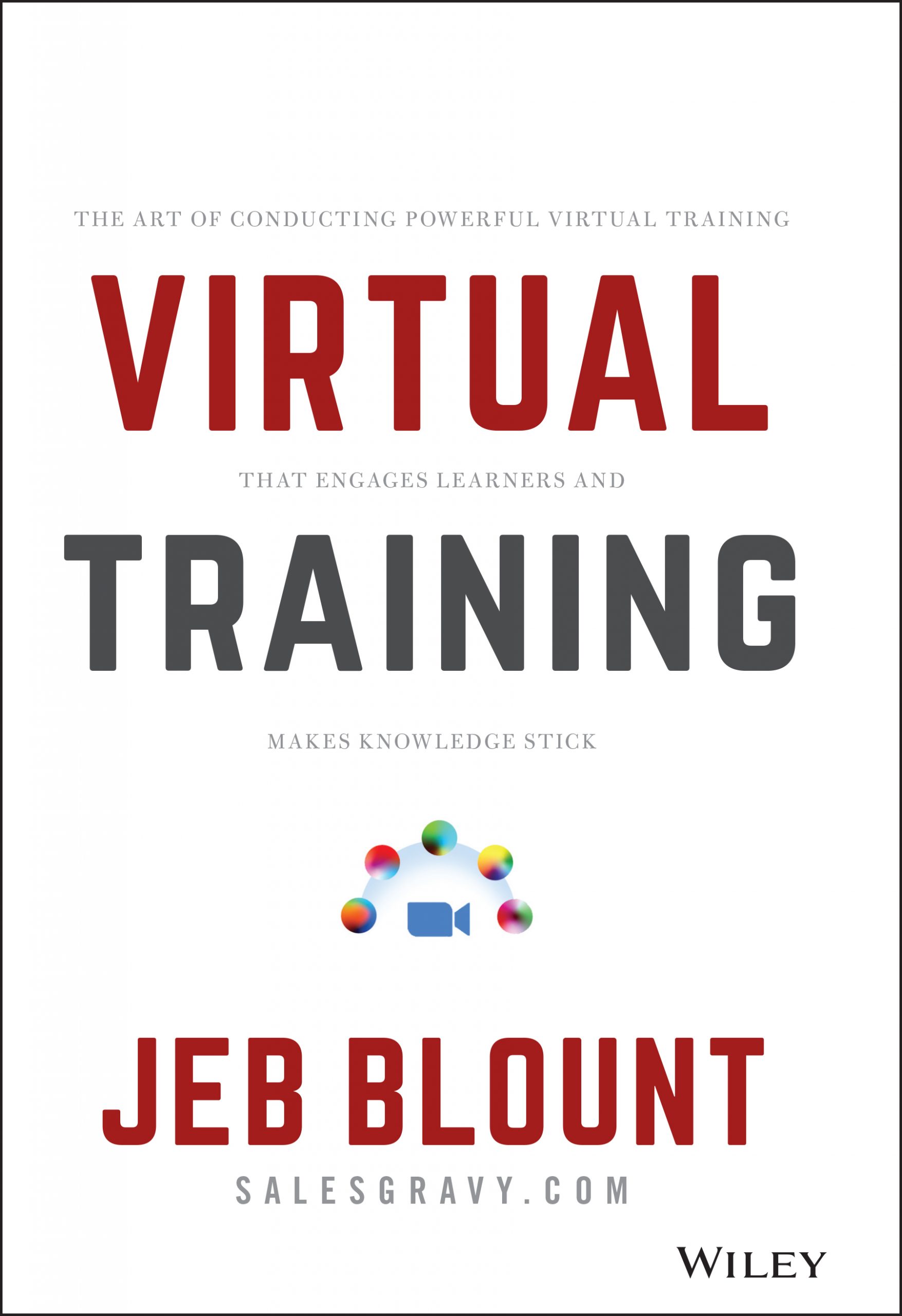I was excited to read this book as I spent many years in Corporate Training roles previously. Like the author, due to the pandemic I had to adjust my preconceived notions about virtual training and pivot to deliver many courses online over the past year and a half.
The first quarter of the book was surprisingly autobiographical, positioning the Sales Gravy business and providing the context for the size of the move online Jeb and his team had taken. I was interested to see stats that suggested they were challenging expectations with their move to virtual training with participants rating the virtual experience 4.9/5.00 compared to 4.7 across previous surveys about face-to-face training.
If you are a trainer who is thinking about delivering virtual training, the second half of the book is far more practical with focus on both the technical aspects of good delivery and the interpersonal. The chapter entitled ‘Rise above your tech and video camera phobia’ offers ‘tough love’ that anyone who is still shying away from virtual training can benefit from.
The most useful part of the book I found was about the training design which talks about chunking training down and the optimum duration for virtual training to be 120 minutes. This is a conclusion I had also reached from personal experience, so it was helpful to see this reiterated by someone whose business has clocked up thousands of hours of virtual training. The other key takeaway for me was the idea that it is important to engage participants from module one which can mean re-ordering face to face training content which often starts with the foundational or basic content. The author explains how this can risk people checking out and not attending future modules because they found the first one too basic, so it’s important to adjust the order of content delivery to maximise perceived value from module one. It sounds obvious, but I felt a really salient point.
In good training fashion, each chapter has a list of questions and space for self-reflection on the learning which means the book can be used as a practical handbook.
So, in summary, if you have been delivering virtual training for some time, you will probably have figured many of the points made in this book out for yourself although there will undoubtedly be a few nuggets that still make it worth reading. On the other hand, if you are starting on the journey of virtual training then this is likely to be an invaluable handbook.
Published by Wiley
Lucinda Carney, Host HRUprising Podcast. CEO Actus Software and author of ‘How to be a Change Superhero’







